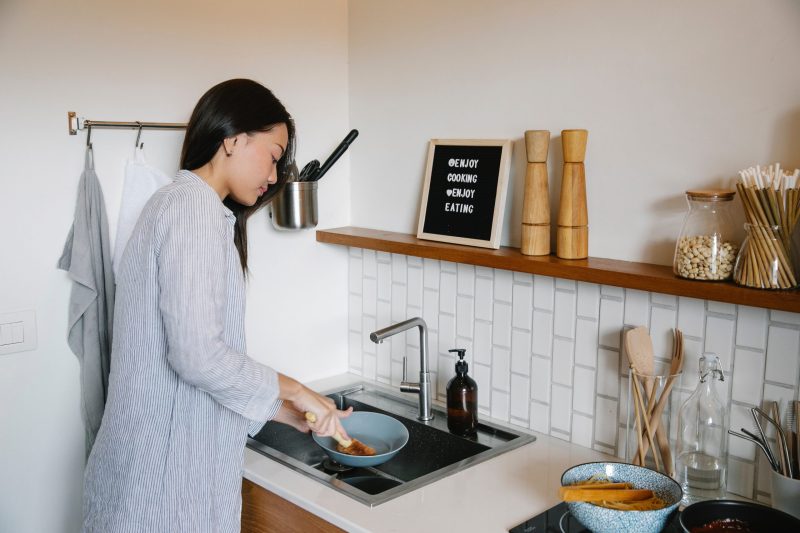Water is life, as the saying goes. We use water for food, health, livelihood, fun, and leisure. But water can also take away life when it’s contaminated or, worse, in the case of a water shortage. Water does affect our daily lives, proving that there is no life on Earth without water.
A report in the USA showed that the average American family uses more than 300 gallons of water per day at home. And roughly 70% of this use occurs indoors.
According to a UNESCO report in 2021, “The values of water to human well-being extend well beyond its role in supporting direct physical life-sustaining functions, and include mental health, spiritual well-being, emotional balance, and happiness.”
Simply saving water in our daily activities not only goes a long way to help alleviate these impending shortages, but also saves more lives. By simply thinking about water while using it around the home, we will naturally become more efficient with it and play a huge role in protecting our environment and this precious resource.
Consequences of water shortages
In the modern world, we’re lucky to be able to take it for granted that our homes have a constant supply of clean and safe running water.
When there is a water shortage, families are forced to cook with and drink contaminated water. Moreover, unsafe water is the primary cause of/ high rates of diarrheal and waterborne diseases like cholera, hepatitis A, typhoid, and polio among children. As a result, children are constantly exposed to a myriad of health complications, curtailing their physical and mental development and exacerbating malnutrition and stunting. In extreme cases, these diseases can lead to lifelong morbidities and even death.
4Rs method: the heart of global water conservation
Water is becoming a worldwide problem, it has become very important for each one of us to follow the principles of the 4Rs of Water for the sake of our world and future generations. Use the 4Rs of water conservation:
Reduce: use water wisely and make any changes even small to your habit can help reduce the amount of water you use.
Repair: A tap leaking one drop per second wastes enough water to fill a bathtub every week. Most leaks are simple to find and easily fixed, at low or no cost. Regularly check toilets, pipes, and faucets for leaks and repair them immediately.
Retrofit: adapting or replacing an older, less-efficient fixture or appliance with one of the many water-saving devices now on the market.
Recycle: the rain barrel method — capturing rainwater from a roof and then using it to water plants and shrubbery, common in the 1950s and 1960s, is one of the simplest examples of recycling water.
Water preservation tips
We can save gallons of water in our daily life by making some small changes in our habits and paying more attention to how we use water. Here are a few simple and easy tips to save water around the home:
In the kitchen
We use around 10% of our total household water in the kitchen – cooking, cleaning, washing, and drinking.
The most effective way to save water is not to let the faucet needlessly run while cooking; low-flow faucets flow at 1.5 gallons per minute, while conventional faucets flow around 5 gallons per minute.
Wastewater when washing fruit and veggies in the sink; or running a tap to get warm water, can be reused for plants.
Boil food in as little water as possible to save water and cooking fuel, also boiling vegetables causes water-soluble vitamins like vitamin C, B1, and folate to leach into the water. Researchers also found steaming kept the highest level of nutrients.
Save water by defrosting the freezer or fridge or putting items in a half-full sink, and only washing full loads in the dishwasher and skip the pre-rinse – scrape off food into the compost/bin instead.
In the bathroom
Showers make up almost 22% of the average household water use making it one of the best places to reduce your water use in the home. Saving just a minute off the daily shower could save up to 18 liters of water.
Another simple act of saving water is turning off the tap while brushing teeth – leaving the tap running for just 2 minutes a day adds up to 168 liters of wasted water.
With a water-efficient showerhead, households can save up to 20,000 liters of water per year. The more stars there are on the WELS label (Water Efficiency Labelling and Standards), the more water efficient the showerhead is.
Reuse leftover water for plants and the garden, or even wash the cars.
In other areas of the house
A washing machine can use more than 120 liters of water per load. Save up laundry by only washing one full load rather than much smaller loads. Using less electricity also can save water – and less energy means emitting less carbon pollution which can also help protect the climate.
Simply purchasing bottled water as less as possible, could help reduce damaging effects such as wasting resources and exacerbating climate change. Skipping the bottle is one step toward solving the water crisis.
Choose appliances and fixtures labeled ENERGY STAR which consume less water. The more stars on the Energy Rating Label, the more energy efficient the appliance is.
In conclusion
Every drop is worth it. More attention is paid to water conservation, more lives are saved. There is a call to recognize the importance of water. we need to save it from being dirtied and spread knowledge for the same. Our most useful tip: be mindful of your water use. It’s simple, the more we are aware of our water use, the less likely we are to waste it.
If you would like to learn more about water management, check out the Household Management Science Labs. The lab produces courses, certifications, videos, podcasts, and other learning materials based on the research of the Institute for Life Management Science. Visit the Household Management Labs today.
Photo by Sarah Chai on Pexels



